7 Leafy Green Pet-Friendly Houseplants For You To Enjoy
Houseplants offer a wealth of benefits to you and your home. They help to brighten up your home and provide cleaner air for you to breathe. But, if you have a pet at home, you need to ensure to select pet-friendly houseplants to avoid any unwanted vet bills.
As a pet owner, you’ll know just how important their health and wellbeing is (and how expensive the vet bills can be!). Many species of plants, particularly houseplants are harmful, even life-threatening to your beloved pet.
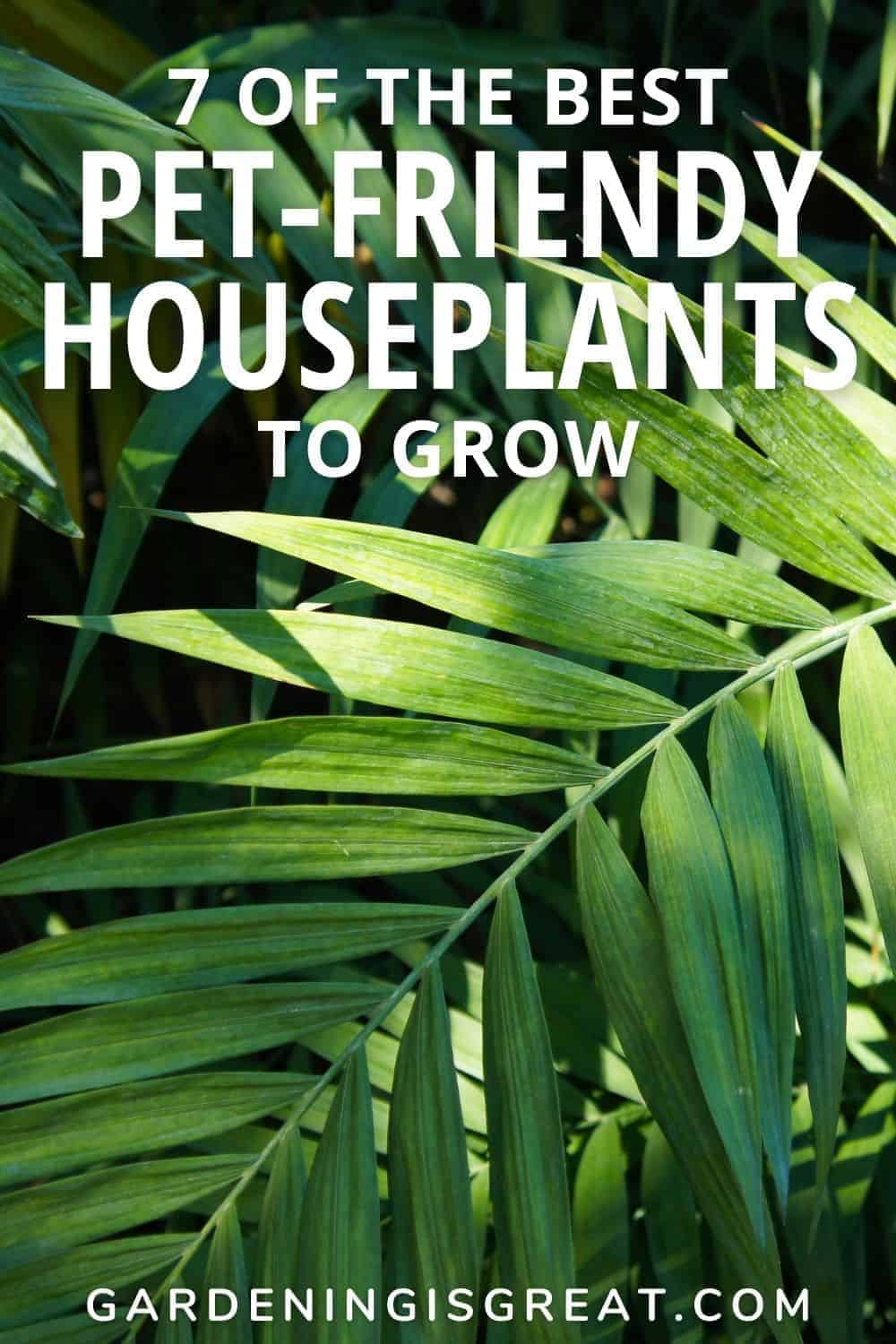
This post contains affiliate links that earn me a commission at no additional cost to you.
Take the time to read through this post so that you can safely select the perfect houseplant for you and your furry friend.
7 Leafy Green Pet-Friendly Houseplants
Areca Palm
Areca Palms are a classic houseplant with feather-like leaves that span upwards and outwards. Their deep green leaves complement any color scheme and help brighten up any indoor space.
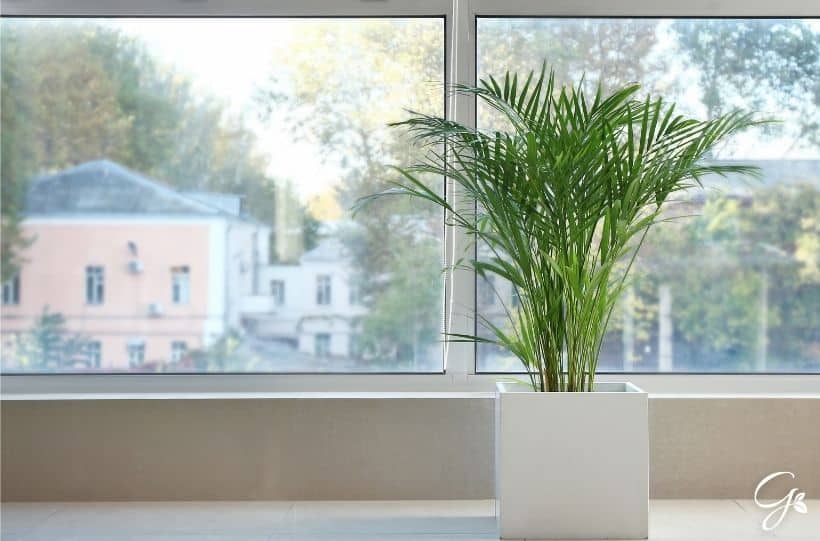
Though this houseplant can grow incredibly tall, up to 7 feet, they are often started as a small tabletop plant. Each year, they can grow an additional 6-10 inches and continue to do so for their full 10-year lifespan. As it grows, you will need to repot your plant to allow space for its roots.
Areca Palms require an area of bright sunlight. However, be sure to not place them in direct sunlight as this will turn their leaves yellow. They also require regular watering but ensure the soil dries slightly in between.
Baby Rubber Plant
Unlike palms, the Baby Rubber Plant has thick, waxy-looking round leaves. The plant is small but extremely eye-catching with large curving lime leaves.
Also known as a Peperomia Obtusifolia, this pet-friendly houseplant prefers indirect sunlight and watering every 1-2 weeks. It is important to allow the soil to dry out between watering.
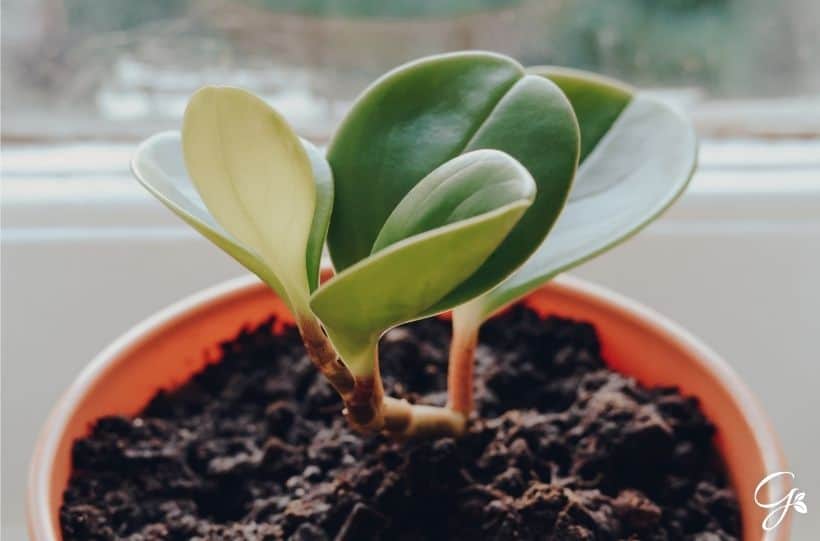
As they originate from South America, they do prefer slightly warmer conditions and need to be placed in an area of your home that does not experience drafts.
Baby Rubber Plants make an ideal houseplant as they only grow to a maximum of 2 feet tall.
Howea forsteriana
Another type of palm, Howea Forsteriana can grow to 2 meters tall with dark green leaves that can span out to 1.5 meters. With this in mind, this houseplant is best suited to a larger indoor space.
Similar to the other pet-friendly houseplants listed, Howea Forsteriana prefers indirect sunlight. Check that the soil has dried out before watering your plants. They do not do well waterlogged and their roots will start to rot if consistently sat in moist soil.
Chamaedorea Elegans
Also known as Parlor palm, Chamaedorea Elegans originated from Central America and is a popular houseplant for its delicate, green leaves.
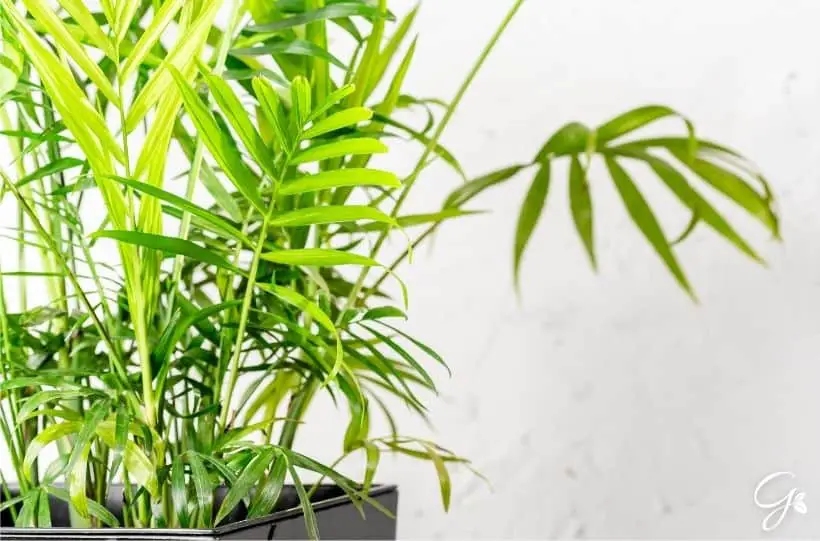
Unlike the other palms mentioned, Chamaedorea Elegans is a softer green with leaves that are spaced out, and grow from tall, think stems. It is much smaller in height also making it a preferred choice if you have less indoor space. Parlor palms grow a maximum of 2-6 feet in height when grown indoors.
To grow parlor palms, place them in an area indoors with access to sunlight, but positioned away from direct sunlight. The light will impact their leaves causing them to wilt and fade in color.
Ensure when watering to check the topsoil is dry first, otherwise, your palm’s roots are at risk of being waterlogged.
Norfolk Island Pine
Norfolk Island Pines are a thin-stemmed, soft pine tree with small needle-like leaves. Contrary to what you might think based on its name, the Norfolk Island Pine is a tropical plant. With this in mind, it needs to be treated as such.
Norfolk Island Pine’s need to be kept in an area that is draft-free and has a consistent temperature with high humidity.
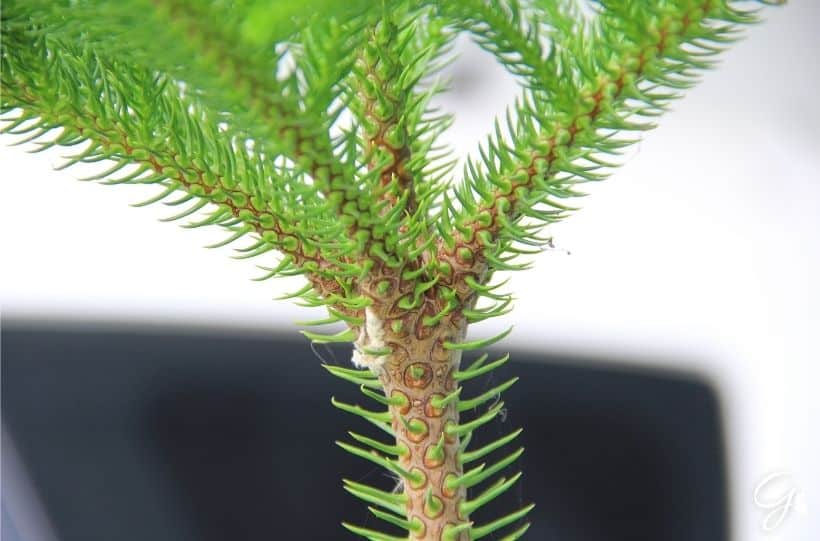
Unlike ferns, this pine tree requires several hours of direct sunlight each day. Though it does need regular watering, check first that the topsoil is dry. This will prevent overwatering which can turn your plants leaves and branches brown.
Spider Plant
Spider plants or Chlorophytum Comosum, are named so due to their spidery appearance. With long, outreaching leaves and smaller spider plants dangling down from the main plant, this plant represents the stretched-out legs of a spider.

Perfect for new gardeners, this pet-friendly houseplant is easy to maintain and is very tolerant. They require bright but indirect sunlight and regular watering. Be careful not to overwater as this can lead to root rot. Check the soil first to see how moist it is and adjust your water routine accordingly.
During spring, spider plants produce delicate white flowers that develop into smaller spider plants known as spiderettes. If you’d like to grow a second spider plant from the spiderettes, select one spiderette to pot in soil whilst still attached to the mother plant. Once it has established roots, it can then be cut away.
Baby Tears
This pet-friendly houseplant offers texture and a softer feel to the above plants. Baby tears (Soleirolia soleirolii) is part of the nettle family, with delicate tiny leaves that grow tightly together making it often mistaken for a type of moss.
Baby tears grow extremely well in areas with less light, growing up to 4 inches tall but can spread out to 36 inches. Indoors, it will remain evergreen all year round but does prefer to be grown in a warmer environment.
Unlike many houseplants, baby tears require a lot of water. It is important to not let the soil dry out as your lush green leaves will begin to wilt.
Leafy Green Houseplants That Wont Harm Your Pets
If you’re looking for a pet-friendly houseplant to brighten up your indoor space, any of these 7 leafy green plants are a great option. Each plant is easy to maintain and perfect for gardeners with any level of experience.
Before selecting one of these pet-friendly plants, ensure to consider how much space you have as some of them grow over 2 meters tall and wide. Also, take into account whether or not your pet is likely to play with or chew your plants.
Though they are not poisonous to your pet, certain plants such as the Norfolk Island Pine may lead to your pets experiencing discomfort due to the sharp, needle-like leaves.
Read more top tips on taking care of your houseplants at home here:

